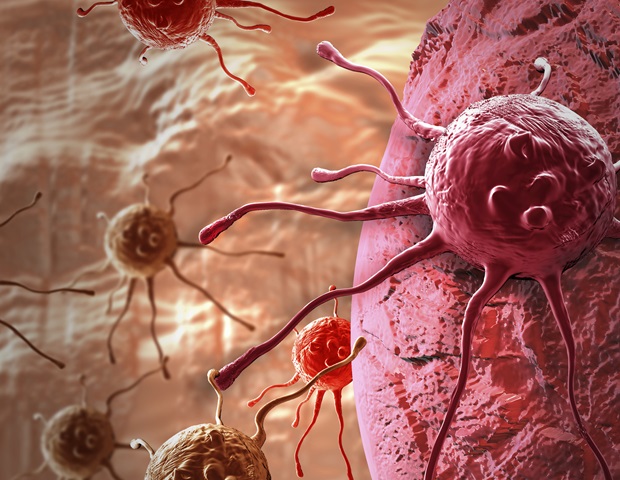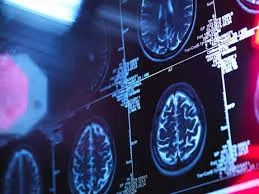Tumor Stiffness: The Missing Link in Understanding Cancer Progression
Cancer is one of the leading causes of death worldwide, with millions of new cases diagnosed annually. While significant progress has been made in understanding the genetic and molecular mechanisms of cancer, researchers have increasingly turned their attention to the tumor microenvironment — the ecosystem of cells, molecules, and structures surrounding a tumor. Among these factors, tumor stiffness has emerged as a critical element influencing cancer cell behavior.
Recent groundbreaking research has revealed how the mechanical properties of a tumor, particularly its stiffness, play a pivotal role in promoting cancer cell proliferation and metastasis. This discovery not only deepens our understanding of cancer biology but also opens new avenues for developing targeted therapies.
In this article, we delve into the science of tumor stiffness, its implications for cancer progression, and how this knowledge could transform cancer treatment in the future.
What Is Tumor Stiffness?
Tumor stiffness refers to the rigidity of the extracellular matrix (ECM) within and around a tumor. The ECM is a network of proteins, fibers, and other molecules that provide structural support to cells. In healthy tissue, the ECM maintains a balanced level of stiffness, ensuring proper cell function and communication.
However, in cancerous tissue, the ECM undergoes significant remodeling, often becoming denser and stiffer due to the overproduction of proteins like collagen and fibronectin. This increased stiffness creates an abnormal physical environment that can influence the behavior of cancer cells.
The Study: Unveiling the Connection
In a recent study published in a leading scientific journal, a team of researchers investigated the relationship between tumor stiffness and cancer cell proliferation. Using advanced imaging techniques, mechanical analysis, and cell culture models, they made several key findings:
- Increased Stiffness Activates Oncogenic Pathways:
The researchers discovered that higher levels of stiffness in the ECM activated signaling pathways associated with cancer cell growth and survival, such as the YAP/TAZ pathway. - Stiffness Enhances Cellular Mechanotransduction:
Mechanotransduction — the process by which cells sense and respond to mechanical signals — was found to be heightened in stiffer environments. This heightened response promoted cancer cell proliferation and migration. - Tumor Stiffness Drives Immune Evasion:
Stiff tumors were shown to create an immunosuppressive microenvironment, making it harder for the body’s immune system to detect and destroy cancer cells. - Impacts on Drug Resistance:
The study also noted that stiffer tumors were more resistant to chemotherapy, as the dense ECM acted as a physical barrier to drug penetration.
Why Does Tumor Stiffness Promote Cancer Growth?
The link between tumor stiffness and cancer proliferation can be understood through several biological mechanisms:
- Increased Cellular Tension:
In stiffer environments, cancer cells experience greater tension, which activates proteins like integrins. These proteins signal the nucleus to promote cell division and survival. - Altered Gene Expression:
Stiffness-induced mechanical stress can alter the expression of genes involved in cell cycle regulation, leading to uncontrolled proliferation. - Hypoxia and Angiogenesis:
A stiff ECM can compress blood vessels within the tumor, reducing oxygen supply (hypoxia). Hypoxia, in turn, triggers the formation of new blood vessels (angiogenesis), which supply nutrients to the tumor and support its growth. - Immune Suppression:
Stiff tumors recruit immune-suppressive cells like myeloid-derived suppressor cells (MDSCs) and regulatory T cells (Tregs), shielding the tumor from immune attack.
Implications for Cancer Treatment
The discovery of the role of tumor stiffness in cancer progression has far-reaching implications for cancer diagnosis, prognosis, and treatment.
1. Stiffness as a Biomarker
Tumor stiffness could serve as a biomarker for cancer aggressiveness. Non-invasive imaging techniques, such as elastography, can measure tissue stiffness and help identify tumors with a high risk of metastasis.
2. Targeting the ECM
Therapies aimed at reducing tumor stiffness or remodeling the ECM could make tumors less hospitable for cancer cells. Potential strategies include:
- Collagenase Enzymes: Breaking down excess collagen to reduce stiffness.
- Inhibitors of Cross-Linking Enzymes: Preventing the formation of dense ECM structures.
3. Improving Drug Delivery
By softening the tumor ECM, it may be possible to enhance the penetration of chemotherapy drugs, making treatments more effective.
4. Combination Therapies
Combining ECM-targeting therapies with immunotherapy or chemotherapy could provide a multi-pronged approach to combat cancer.
Challenges and Future Directions
While the findings on tumor stiffness are promising, several challenges remain:
- Complexity of the ECM:
The ECM is a highly dynamic structure, and its composition varies between tumor types and even within different regions of the same tumor. Understanding these variations is crucial for designing effective treatments. - Side Effects of ECM Remodeling:
Targeting the ECM could potentially disrupt normal tissue function, leading to unintended side effects. - Translational Gaps:
Moving from laboratory findings to clinical applications requires extensive testing and validation, which can take years.
Real-Life Applications: Case Studies
1. Breast Cancer
Breast tumors are known to exhibit high levels of stiffness, which correlate with poor prognosis. Researchers are investigating ECM-targeting therapies to improve outcomes in patients with aggressive breast cancer.
2. Pancreatic Cancer
Pancreatic tumors are among the stiffest cancers, with a dense ECM that hinders drug delivery. Early trials of ECM-remodeling drugs have shown promise in enhancing the efficacy of chemotherapy.
3. Liver Cancer
In liver cancer, stiffness is linked to chronic inflammation and fibrosis. Targeting these processes could slow cancer progression.
Broader Implications: Beyond Cancer
The role of tissue stiffness is not limited to cancer. Similar mechanisms are at play in other diseases, such as:
- Fibrosis: Excessive ECM stiffness is a hallmark of fibrotic diseases affecting the liver, lungs, and kidneys.
- Cardiovascular Disease: Stiffening of blood vessels contributes to conditions like hypertension and atherosclerosis.
- Aging: Tissue stiffness increases with age, impacting organ function and regeneration.
A New Frontier in Cancer Research
The discovery of the role of tumor stiffness in promoting cancer cell proliferation represents a paradigm shift in our understanding of cancer. By integrating mechanical biology with molecular and genetic research, scientists are uncovering new dimensions of cancer progression that were previously overlooked.
This breakthrough underscores the importance of a multidisciplinary approach to cancer research, combining insights from physics, engineering, and biology to tackle one of humanity’s greatest challenges.
As researchers continue to unravel the complexities of tumor stiffness, the hope is that these findings will lead to more effective and personalized treatments, ultimately improving outcomes for millions of cancer patients worldwide.























